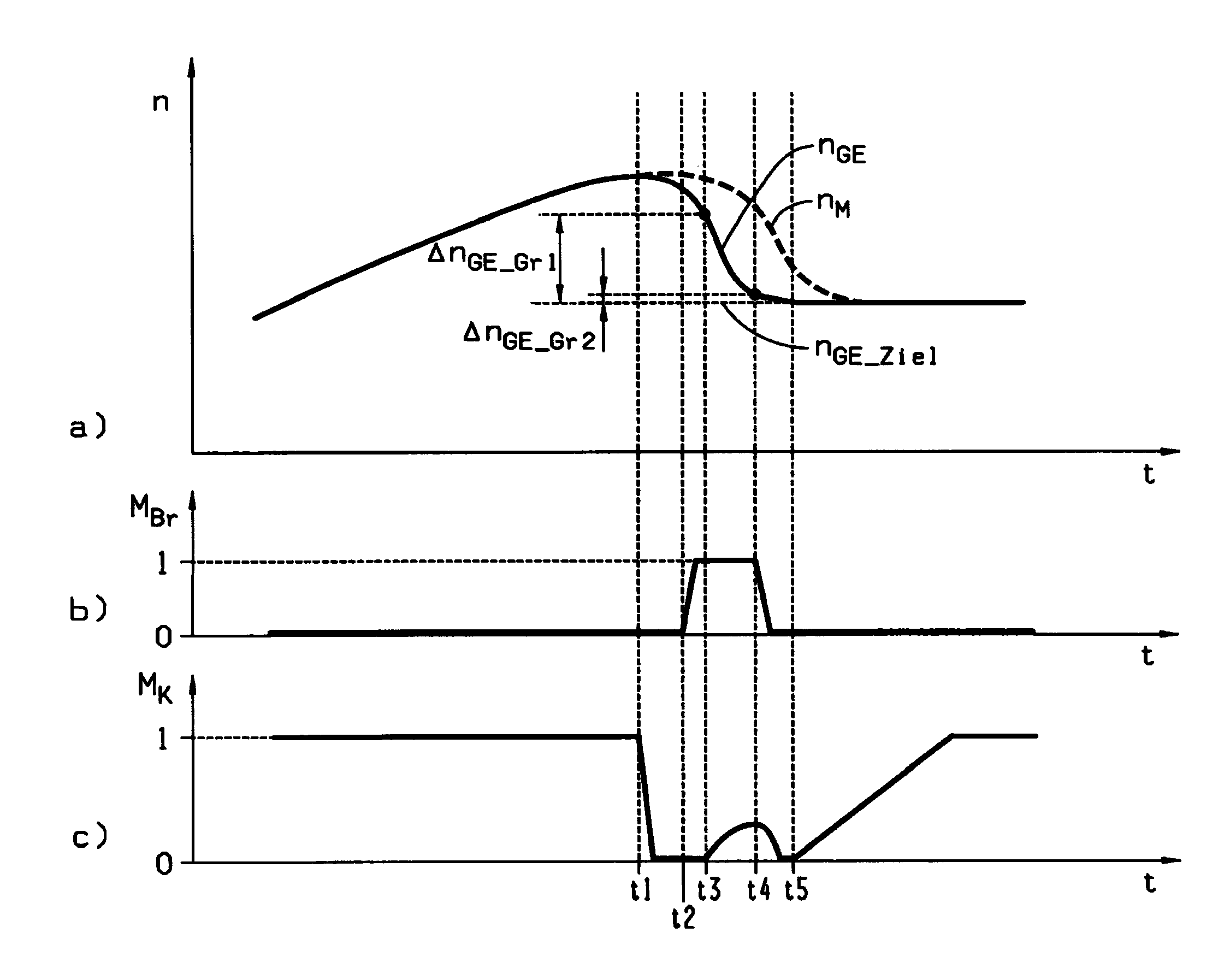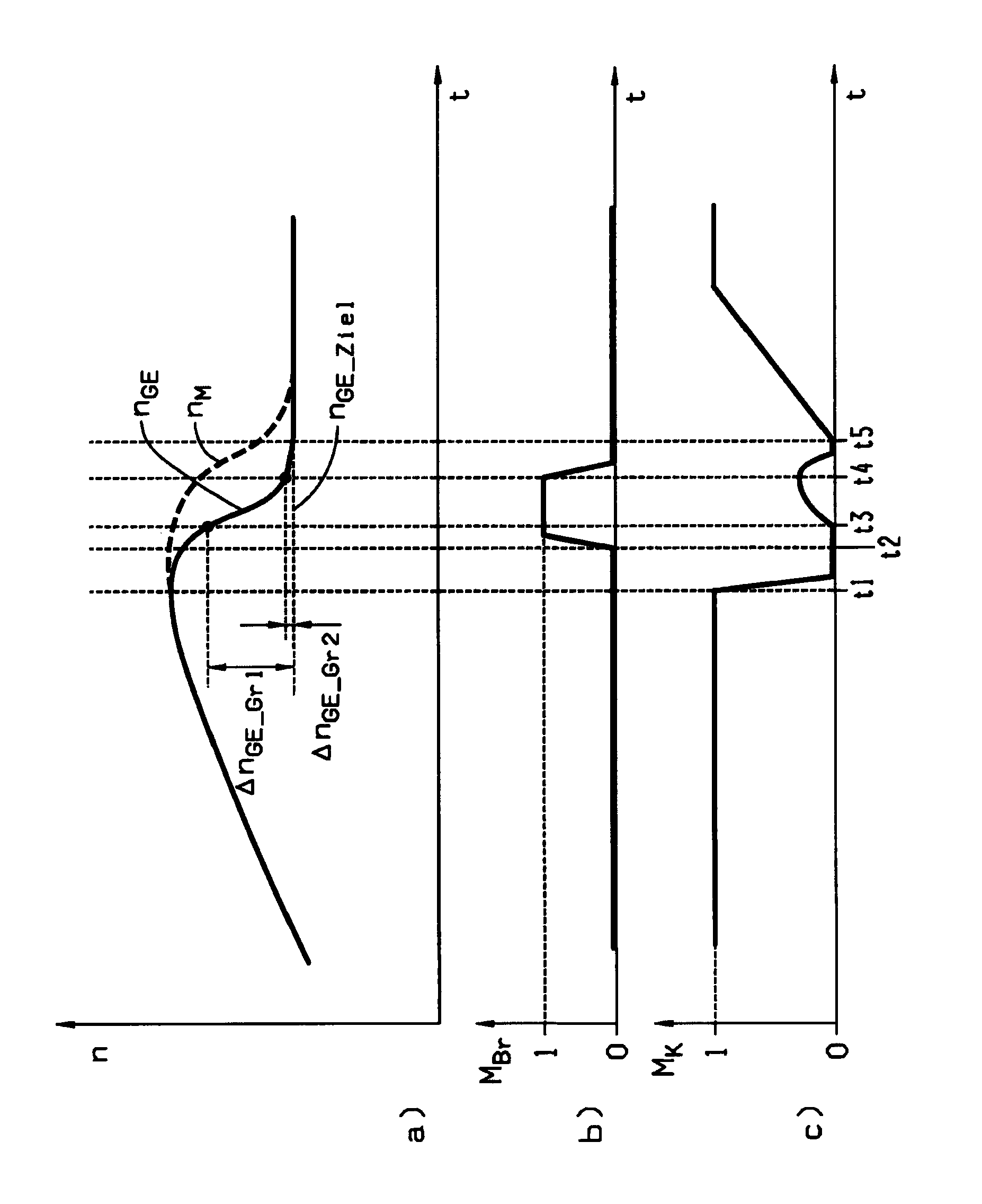Shift control method in an automated manual transmission
a technology of automatic transmission and control method, which is applied in the direction of gearing control, gearing element, belt/chain/gearing, etc., can solve the problems of synchronized gear clutches, increasing the dimensions and weight of the gearshift transmission, and relatively expensive manufacturing, so as to achieve the effect of reducing the torque more quickly
- Summary
- Abstract
- Description
- Claims
- Application Information
AI Technical Summary
Benefits of technology
Problems solved by technology
Method used
Image
Examples
Embodiment Construction
[0025]In the diagrams of FIG. 1, for an upshift sequence according to the invention the time variations of characteristic operating parameters of a drivetrain are reproduced, the drivetrain comprising an automated gearshift transmission provided with unsynchronized gear clutches, whose input shaft is connected via an automated, controllable separator clutch with the driveshaft of a drive motor, and which also comprises a transmission brake which is in drive connection with the input shaft. Part-diagram a) shows the speed variations of the input shaft nGE of the gearshift transmission and of the driveshaft of the drive motor nM, part-diagram b) shows the torque variation MBr of the transmission brake, and part-diagram c) shows the torque variation of the torque MK that can be transmitted by the separator clutch.
[0026]At the beginning of the upshift process, from time t1 the load reduction at the drive motor and the full disengagement of the separator clutch take place almost simultan...
PUM
 Login to View More
Login to View More Abstract
Description
Claims
Application Information
 Login to View More
Login to View More - R&D
- Intellectual Property
- Life Sciences
- Materials
- Tech Scout
- Unparalleled Data Quality
- Higher Quality Content
- 60% Fewer Hallucinations
Browse by: Latest US Patents, China's latest patents, Technical Efficacy Thesaurus, Application Domain, Technology Topic, Popular Technical Reports.
© 2025 PatSnap. All rights reserved.Legal|Privacy policy|Modern Slavery Act Transparency Statement|Sitemap|About US| Contact US: help@patsnap.com


